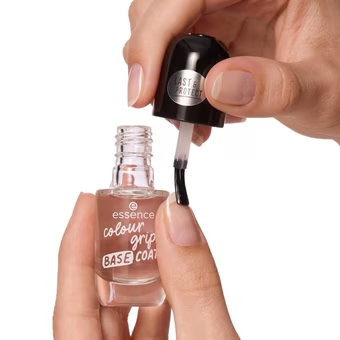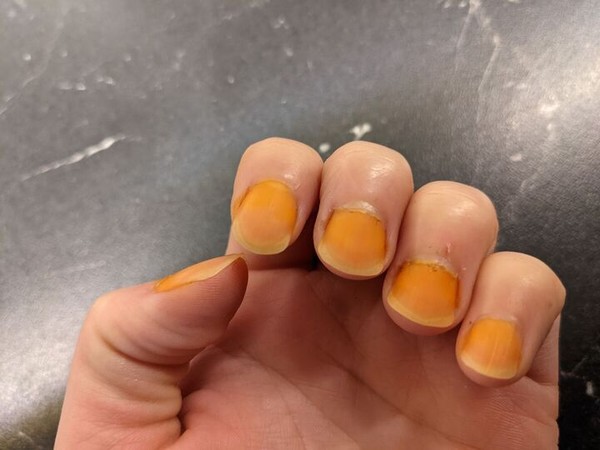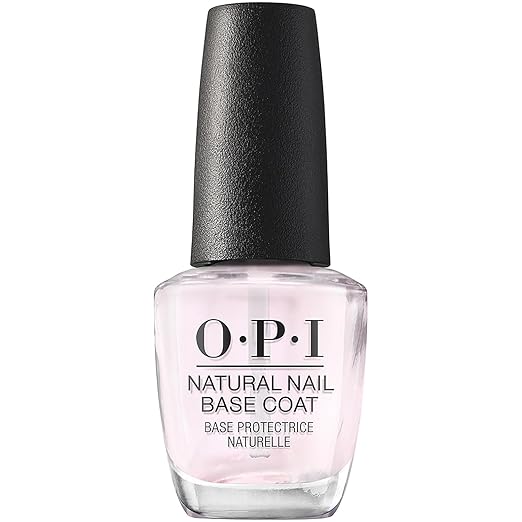Why You Shouldn’t Skip the Base Coat in Your Manicure
Raise your hand if this sounds familiar: You’re excited to paint your nails, but you’re short on time. So, you grab your favorite polish shade, slap it on bare nails, and call it a day. Fast-forward 48 hours… your nails are chipped, stained, or peeling like old wallpaper. What went wrong?
Disclosure: This article contains Amazon affiliate links. As an Amazon Associate, I earn from qualifying purchases. If you click on a link and make a purchase, I may earn a small commission at no extra cost to you.

Spoiler: You skipped the base coat.
Yes, a base coat is not just a “nice-to-have”; it’s the difference between a salon-quality finish and a hot mess. Let’s break down exactly why this step is non-negotiable.
What Does a Base Coat Actually Do?
A base coat is like the ultimate multitasker for your nails. Here’s its resume:
1. Creates a Smooth, Even Surface
Your nails aren’t naturally flawless. Tiny ridges, dents, or bumps (often caused by aging, genetics, or damage) can make the polish look streaky or lumpy.
Base coats contain ingredients like silica or polymers that physically fill in uneven textures. Think of it like spackling a wall before painting.
2. Block stains from Pigmented Polishes
Dark, vibrant, or neon polishes (like red, black, or electric blue) contain strong dyes that can seep into your nail plate.

Why? Because nails are porous. They are made of layers of keratin (the same protein in hair), so without a base coat, dye molecules penetrate these layers, causing yellow or gray stains.
Already have stained nails? Here is a quick DIY fix.
How do basecoats prevent stains?
Base coats create a non-porous “seal” over the nail. Some even have stain-blocking agents like iron oxides or titanium dioxide to reflect pigment particles.
3. Strengthens Weak or Peeling Nails
If your nails are brittle, peeling, or prone to splitting, a base coat can act like protective armor. It includes ingredients like:
- Keratin: Reinforces nail structure.
- Calcium: Adds hardness.
- Biotin: Promotes thickness and growth.
These ingredients penetrate the nail bed, bonding to keratin fibers to prevent cracks. Over time, regular use can make nails less prone to breakage.
4. Helps Polish Adhere Better
Ever had polish slide off your nails in one piece? That’s what happens without a base coat.
The chemistry

Base coats are slightly sticky (thanks to ingredients like acrylates or vinyl). This creates a tacky surface for polish to “grip” onto. Also, some base coats work by adjusting your nail plate’s pH. This makes it less oily and more receptive to polish.
5. Prevents Peeling and Chipping
Polish doesn’t just chip from the tips—it can peel off in sheets if it’s not bonded properly. Nails produce natural oils that repel polish. A base coat blocks these oils, so the polish stays put.
Studies show manicures with base coats last 2-3x longer than those without.
6. Protects Nails from Harsh Chemicals
Nail polish isn’t exactly gentle. Ingredients like formaldehyde, toluene, and dibutyl phthalate (DBP) can dry out and weaken nails over time. A base coat acts like a protective barrier, stopping these chemicals from directly contacting your nail plate. This prevents:
- Dehydration: Nails losing moisture.
- Keratin breakdown: Leading to peeling.
Different Base Coats for Different Needs
Not all base coats are the same! Here’s how to pick:
| Type of Base Coat | Best For | Key Ingredients |
|---|---|---|
| Ridge-Filling | Textured nails | Silica, polymers |
| Strengthening | Weak, peeling nails | Keratin, calcium |
| Sticky Base | Keratin, Calcium | Methacrylate resins |
| Treatment Base | Discolored nails | Stain blockers (iron oxides) |
What Happens When You Skip It?
(Spoiler: It’s Not Pretty)
1. Your Nails Turn into a Tie-Dye Disaster
Imagine painting a white wall without primer. That’s what happens when you skip a base coat with dark or bold polish. The dye particles (especially in reds, purples, and neon shades) penetrate your nail’s keratin layers, leaving behind a yellow or gray tint. This stain can linger for weeks, even after you remove the polish.
2. Chips and Peeling Become Your New Normal
No base coat = polish clinging to bare nails. But nails are porous and oily (thanks to natural oils), so polish struggles to bond. The result? Your manicure starts chipping at the tips or peeling off in sheets within days.
3. Your Nails Get Thirsty (And Not in a Good Way)
Nail polish contains chemicals like formaldehyde and toluene that can dry out your nails. A base coat acts like a protective barrier, stopping those harsh ingredients from sucking the moisture out of your nail bed. Without it, you’re left with brittle, peeling nails that break when you open a soda can.
Myth-Busting:
Let’s tackle the top excuses:
1.“It adds too much time!”
A base coat takes 60 seconds to apply. Re-doing your entire manicure later? That’s 30+ minutes.
2. “I use clear polish instead!”
Clear polish ≠ base coat! It lacks the sticky base or protective ingredients. You’ll still get stains and chips.
3. “My nails are healthy—I don’t need it!”
Even strong nails can weaken over time from polish chemicals. Prevention is easier than repair!
Conclusion:
If you skip the basecoat, you’re essentially letting your nails go into battle without a shield. Sure, it might look okay for a minute… but things get messy fast. That 60-second step? It’s the secret to glossy, chip-free nails that last longer and stay healthier. Totally worth it.
Got a base coat horror story (or success tip)? Share it below! 💬
(P.S. If you found this helpful, pin it for your next DIY mani session!)
